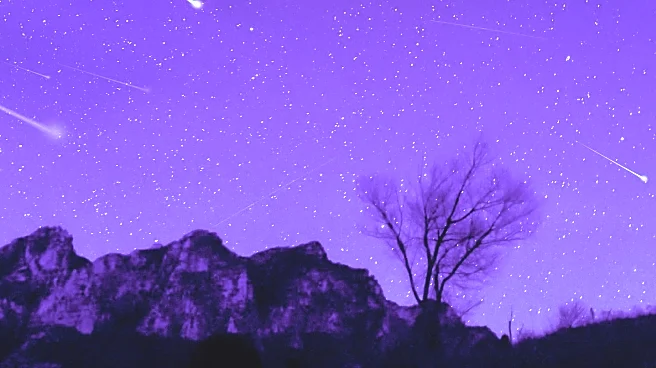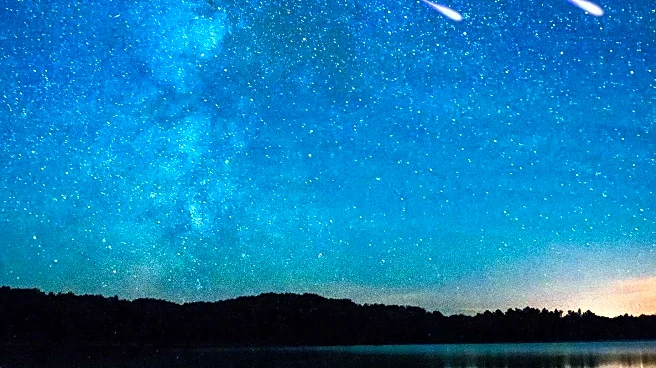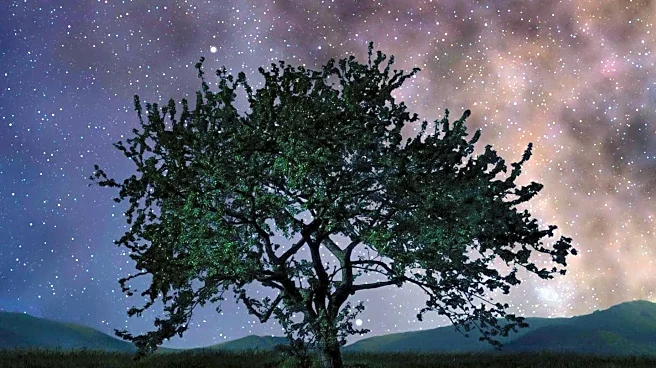What's Happening?
The Southern Taurids meteor shower is set to peak from the night of November 4 to the early morning of November 5, coinciding with a supermoon. This meteor shower, active from September 20 to November 20,
is expected to be visible worldwide except at the South Pole. The supermoon, occurring on November 5, will be 30% brighter and 14% larger than usual, potentially impeding the visibility of the meteor shower due to its brightness. The American Meteor Society notes that the simultaneous activity of the Northern Taurids and Orionids meteor showers could increase the occurrence of fireballs, which are brighter than normal meteors.
Why It's Important?
The occurrence of the Southern Taurids meteor shower during a supermoon presents both a unique viewing opportunity and a challenge for stargazers. The increased brightness of the supermoon may hinder the visibility of the meteor shower, affecting amateur astronomers and enthusiasts who rely on darker skies for optimal viewing. This event highlights the interplay between celestial phenomena and their impact on observational astronomy. The supermoon also draws attention to the natural cycles of the moon and its effects on Earth, such as tides, which can have broader implications for coastal regions.
What's Next?
Stargazers are advised to use apps like SkyView or SkySafari Pro to locate the Taurus constellation and optimize their viewing experience. The next significant meteor showers, such as the Leonids and Geminids, will occur later in the year, offering further opportunities for observation. The supermoon will continue to affect tides, potentially leading to coastal flooding if storms coincide with high tides. Observers are encouraged to find dark locations away from light pollution and allow their eyes to adjust to the darkness for the best viewing experience.











